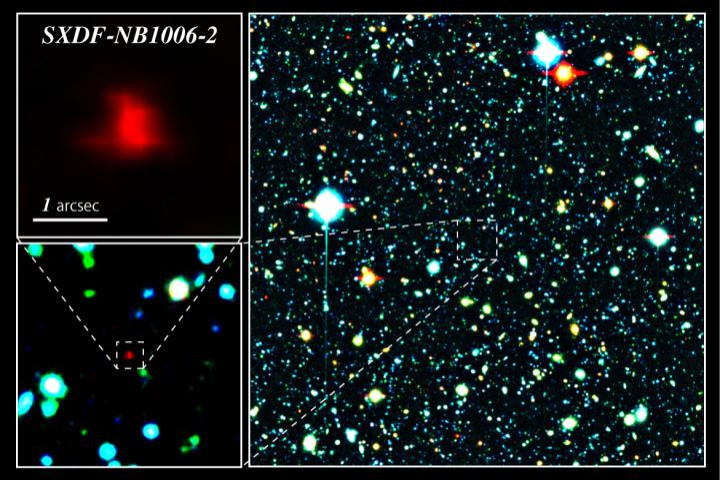Oxygen detected in galaxy 13.1bn light years away

Oxygen has been detected in a galaxy 13.1bn light years away – the most distant oxygen ever discovered from Earth. The find, scientists say, provides an insight into the early universe and sheds light on a little-understood process called cosmic reionization.
When the universe began, the different chemical elements we find today did not exist, containing only hot, ionized gas. After a few hundred million years, the universe cooled and the gas became neutral.
Eventually, the first stars were formed and the radiation they gave off began to ionize the gas again – cosmic reionisation. And this led to the creation of heavy elements. This process caused the universe to change dramatically, but how it happened is largely unknown.
An international team of scientists using the Alma telescope in Chile to study the galaxy SXDF-NB1006-2. At 13.1bn light years away, it was first discovered in 2012 and, at the time, was the most distant ever discovered.
The scientists were looking to study heavy elements in this galaxy to try to establish what triggered the cosmic reionization. Akio Inoue, from Osaka Sangyo University, said: "Seeking heavy elements in the early universe is an essential approach to explore the star formation activity in that period.
Studying heavy elements also gives us a hint to understand how the galaxies were formed and what caused the cosmic reionization. SXDF-NB1006-2 would be a prototype of the light sources responsible for the cosmic reionization."

Publishing their findings in the journal Science, the team detected light from ionized oxygen and dust particles. They found the galaxy contains a tenth of the oxygen found in our Sun, which was to be expected as the universe was so young.
What was less expected was the discovery of a very small amount of dust, made from heavy elements – far less than their simulations had predicted. They were also unable to detect any emissions from carbon.
Researchers now plan to carry out more observations to better understand this early galaxy and cosmic reionization. "This is the first step to understanding what kind of objects caused cosmic reionization," said Yoichi Tamura, from the University of Tokyo
"Our next observations with ALMA have already started. Higher resolution observations will allow us to see the distribution and motion of ionized oxygen in the galaxy and provide precious information to understand the properties of the galaxy."
© Copyright IBTimes 2025. All rights reserved.






















